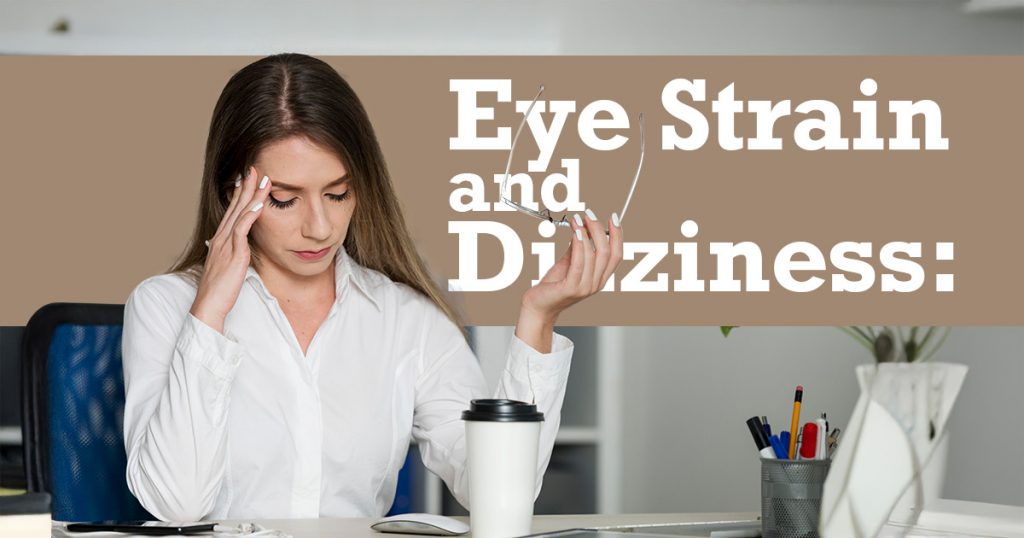Dealing with dizziness, headaches, and blurry vision can be frustrating, especially when they seem to come out of nowhere. Many people don’t realize that eye strain can trigger these issues, affecting balance and overall well-being. When the eyes work too hard, whether from too much screen time or focusing for long periods, it can lead to discomfort that throws off coordination. Understanding how vision impacts stability is key to finding the right approach for relief. Effective strategies for managing these symptoms can make a big difference in daily life.
Could Your Eyes Be Causing Your Vertigo?
The visual system plays a huge role in balance, so when the eyes struggle to focus, it can throw everything off. Straining to read, staring at screens too long, or dealing with uncorrected vision problems can overwhelm the brain, making it harder to process movement and spatial awareness. This can lead to dizziness, nausea, and a feeling of unsteadiness.
Eye-related dizziness can stem from issues like misalignment, poor depth perception, or trouble tracking objects. When the brain receives conflicting signals from the eyes and inner ear, it struggles to maintain stability. Addressing vision strain and making adjustments to daily habits can help reduce these symptoms and improve overall comfort.
What Causes Visual Vertigo?
Bright lights, fast-moving objects, or busy environments can make it harder for the brain to process visual input, leading to dizziness. People with sensitive vision may struggle in places like shopping malls, driving in traffic, or scrolling through digital screens. Eye strain can add to the problem, making it more difficult for the brain to adjust to changes in movement.
Underlying vision problems like astigmatism, convergence issues, or difficulty focusing at different distances can also play a role. If the eyes aren’t working together properly, it can create a sense of imbalance that leads to discomfort. Identifying the root cause of visual strain can make a big difference in managing symptoms and finding effective relief.
Could It Be Binocular Vision Dysfunction (BVD)?
A condition, known as Binocular Vision Dysfunction (BVD), happens when the eye muscles are slightly misaligned, forcing the brain to work harder to merge two different images into one. Over time, this strain can lead to vertigo-like symptoms and make everyday tasks more challenging.
People with BVD often experience discomfort in busy environments, trouble focusing while reading, and feelings of imbalance when walking or driving. Since the visual and balance systems are closely connected, treating eye misalignment can reduce dizziness and improve overall stability.
Symptoms for Adults with Binocular Vision Dysfunction
BVD symptoms can vary from person to person, but common signs include:
- Frequent dizziness or lightheadedness
- Headaches that worsen with screen use or reading
- Eye strain, blurred vision, or double vision
- Difficulty focusing, especially when switching distances
- Motion sickness or discomfort in crowded spaces
- Unsteady walking or feeling off-balance
- Neck pain or shoulder tension from eye strain
Common Treatment for Vertigo Due to BVD
Treating BVD focuses on reducing eye strain and helping the eyes work together more efficiently. Common treatment options include:
- Prescription prism glasses to correct eye misalignment
- Vision therapy exercises to improve focus and coordination
- Adjusting screen settings and lighting to reduce strain
- Limiting prolonged near work and taking regular breaks
- Addressing any underlying vision issues with an eye specialist
Finding Relief from Vision-Related Dizziness
Ignoring dizziness and eye strain can make daily life harder, but the right approach can help restore comfort and stability. Small changes like reducing screen time, improving lighting, and wearing the right prescription lenses can make a big difference. For those with ongoing symptoms, an eye specialist can identify underlying issues and recommend treatments that target the root cause. Taking steps to support eye health can lead to long-term relief and a better quality of life.
